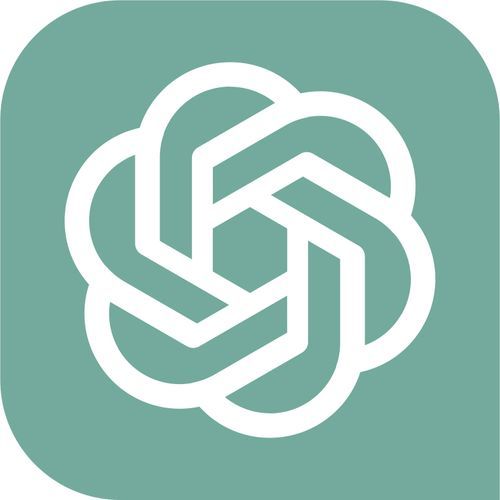Library of teambuilding games & icebreakers


Near and far game
Get everyone outside and then have them choose one person to stay away from and one person to stay close to. Have everyone start moving according to the choices they picked, and you’ll see interesting dynamics develop. See who is the first person to figure out the near and far choices.
Near and far game
How to play Near and far game
Get everyone outside and then have them choose one person to stay away from and one person to stay close to. Have everyone start moving according to the choices they picked, and you’ll see interesting dynamics develop. See who is the first person to figure out the near and far choices.
Gallery



Video


Icebreaker Questions
Icebreaker questions are go-to tools for starting meetings/events on a positive note, grabbing people’s attention, sparking conversation, and helping group members learn more about each other.
Icebreaker Questions
Icebreaker questions are go-to tools for starting meetings/events on a positive note, grabbing people’s attention, sparking conversation, and helping group members learn more about each other.
How to play Icebreaker Questions
From silly ones to serious ones, there’s an endless list of icebreaker questions you can use! Here are 10 of our favorites to get you started:
- If you had to eat one meal for the rest of your life, what would it be and why?
- If you could have any superpower for a day, what would it be and why?
- If you could teleport anywhere in the world, where would it be and why?
- What’s your happy place and why?
- What’s one thing you want to be remembered for after you die?
- Describe a time you said “no” to something that you wish you’d said “yes” to?
- Who is your biggest role model in life?
- If you could rid the world of one thing, what would it be?
- What’s one productivity tool you couldn’t live without?
- What’s your biggest claim to fame?
Gallery



Video


Vocabulary Pictionary
You can make things more challenging by giving teams the opportunity to steal or move onto the next team’s turn. This game is not only a good way to learn new vocabulary, but to help with visual skills as players connect a word with an image. You can also play this game virtually, so it’s perfect for almost any gathering.
Vocabulary Pictionary
Pictionary is a game of charades where players draw words instead of acting them out.
To get started, follow these steps:
- Split the group into teams.
- For every round, pick one team member to draw.
- Provide the drawing team member a word.
- Set a timer for up to sixty seconds for teammates to guess.
- Use a point system where if the team guesses correctly, they get one point.
You can make things more challenging by giving teams the opportunity to steal or move onto the next team’s turn. This game is not only a good way to learn new vocabulary, but to help with visual skills as players connect a word with an image. You can also play this game virtually, so it’s perfect for almost any gathering.
Gallery



Video


Charades
Charades is a classic family party game everyone knows and loves. It also lends itself perfectly to online team-building events, although beware, the game can become considerably more difficult due to the limited view provided by the camera. Playing charades online also means you can eliminate any chance of cheating (all too common in the traditional game) by asking the performer to mute their microphone before starting.
Charades
Charades is a classic family party game everyone knows and loves. It also lends itself perfectly to online team-building events, although beware, the game can become considerably more difficult due to the limited view provided by the camera.
How to play Charades
Playing charades online also means you can eliminate any chance of cheating (all too common in the traditional game) by asking the performer to mute their microphone before starting.
Gallery



Video


Weekly updates
A simple yet effective way to encourage team bonding is by facilitating weekly ‘get-togethers’ online. These meetings can be really short and shouldn’t involve work-related topics. You can start by encouraging each employee to talk about two good things and one bad thing that happened that week.
Weekly updates
How to play weekly updates
A simple yet effective way to encourage team bonding is by facilitating weekly ‘get-togethers’ online. These meetings can be really short and shouldn’t involve work-related topics.
You can start by encouraging each employee to talk about two good things and one bad thing that happened that week.
Gallery



Video


Compiling mission statement
A group mission statement is a hands-on way to get people working together toward a common goal. If your group is more than 10, break it into even smaller groups of 3-4 for this work. Then, have everyone work together to come up with a mission statement for either the company as a whole, an important initiative being worked on, or for the immediate retreat or working session. Teams can start by brainstorming and then narrowing down statements into a single written paragraph that they present out loud to the larger group. It’s a great way to kick off the session with high energy and cooperation.
Compiling mission statement
How to play Compiling mission statement
A group mission statement is a hands-on way to get people working together toward a common goal. If your group is more than 10, break it into even smaller groups of 3-4 for this work. Then, have everyone work together to come up with a mission statement for either the company as a whole, an important initiative being worked on, or for the immediate retreat or working session. Teams can start by brainstorming and then narrowing down statements into a single written paragraph that they present out loud to the larger group. It’s a great way to kick off the session with high energy and cooperation.
Gallery



Video


Suggestion box raffle
If you’re looking for ways to improve morale and enhance communication, try having everyone write down some thoughts. Many times, people don’t want to take the time to do so (or they’re nervous to share their real opinions). Incentivize idea-sharing by holding raffles on various entries. Have everyone write their idea, question, or discussion item down on a piece of paper and put them all in a box. Pick a few entries at random and hand out prizes accordingly.
Suggestion box raffle
How to play Suggestion box raffle
If you’re looking for ways to improve morale and enhance communication, try having everyone write down some thoughts. Many times, people don’t want to take the time to do so (or they’re nervous to share their real opinions). Incentivize idea-sharing by holding raffles on various entries. Have everyone write their idea, question, or discussion item down on a piece of paper and put them all in a box. Pick a few entries at random and hand out prizes accordingly.
Gallery



Video


Lucky Charms
Give all players a large bowl of Lucky Charms cereal. Have everyone sort the charm marshmallows into categories as fast as they can (for example, all hearts together and all clovers together). Whoever sorts through the most cereal in a minute wins.
Lucky Charms
How to play Lucky Charms
Give all players a large bowl of Lucky Charms cereal. Have everyone sort the charm marshmallows into categories as fast as they can (for example, all hearts together and all clovers together). Whoever sorts through the most cereal in a minute wins.
Gallery



Video


Pin the tail on…
Return to your childhood birthday with a “pin the tail on” game. You can buy a set from a party store or online, or you can make up your own game with your own visuals. Some people print a large photo of a coworker and have that as the game piece. For example, if your boss always drinks Diet Coke, maybe you have a life-size image of her and participants should try to pin the beverage into her hand. As a refresher, the game involves having participants approach the game, one at a time, to be blindfolded and spun around. Then, they attempt to pin an accessory to the larger picture. It’s usually good for some laughs to see where everyone’s pins ended up.
Pin the tail on…
How to play Pin the tail on…
Return to your childhood birthday with a “pin the tail on” game. You can buy a set from a party store or online, or you can make up your own game with your own visuals. Some people print a large photo of a coworker and have that as the game piece. For example, if your boss always drinks Diet Coke, maybe you have a life-size image of her and participants should try to pin the beverage into her hand. As a refresher, the game involves having participants approach the game, one at a time, to be blindfolded and spun around. Then, they attempt to pin an accessory to the larger picture. It’s usually good for some laughs to see where everyone’s pins ended up.
Gallery



Video


The customer’s journey mapping
A substantial amount of agile principles can be improved by having your team members step into the customer’s shoes. Problem-solving and conflict resolution through role play can yield some creative results. By mapping out a fictional customer’s journey your teams get a better understanding of the company’s goals.
The customer’s journey mapping
A substantial amount of agile principles can be improved by having your team members step into the customer’s shoes. Problem-solving and conflict resolution through role play can yield some creative results. By mapping out a fictional customer’s journey your teams get a better understanding of the company’s goals, so here’s how to set it up:
Set up:
Before you deliver the activity, craft some customer scenarios. They could be scenarios you’ve faced in the past or more challenging hypothetical examples. As a group, map out each step of the customer’s experience, from the purchase to aftercare support. Some example challenges from the customer’s perspective could be:
a. Complex sign-up process
b. Confusing app navigation
c. Slow loading times for features
d. Not enough customer support when calling
Map out the customer’s journey and seek those points where the frustrations could be soothed. Prioritize those changes and explain how agile collaboration can improve the customer experience.
Gallery



Video


Paper Plane Parade
Everybody knows how to build a paper plane, but who can do it the best? In this creative team game, employees go head to head to build the best paper plane!
Paper Plane Parade
Everybody knows how to build a paper plane, but who can do it the best? In this creative team game, employees go head to head to build the best paper plane!
Great for: Teamwork, creative thinking
Duration: 10 minutes
Players: 4+
You’ll need: Various stationery supplies including paper, sticky tape and scissors
How to play Paper Plane Parade
Setup: Divide your group into even teams and hand each team a matching set of stationery supplies. Each set should include paper, sticky tape and scissors, but feel free to add other items such as glitter, googly eyes, etc.
To play: When the timer starts, the teams have five minutes to construct a paper plane using the supplies they were given. When the time is up, position the teams behind a line and ask them to throw their creations, one by one. The planes will be judged on three criteria: the plane that travelled the furthest, the plane that flew for the longest and the plane that looked the best. It’s up to you whether you inform your group of these criteria before or after the creation process.
Gallery



Video


Guess Who?
This guessing game is more than just a fun activity to pass the time; it’s a chance for your colleagues to learn about each other on a personal level.
Guess Who?
This guessing game is more than just a fun activity to pass the time; it’s a chance for your colleagues to learn about each other on a personal level.
How to play:
- Make a list of real-life or fictional characters that your employees are familiar with (celebrities, historical figures, or people in your industry).
- Divide employees into teams and assign each team a character.
- Take turns asking yes or no questions about the other teams' characters until you guess who it is.
- Once a team identifies a character, they are eliminated.
- Continue until only one team remains with a character that hasn't been eliminated.
This game promotes teamwork, collaboration, and problem-solving skills in a lighthearted way. Additionally, it is a great way to add some fun to the workday while getting to know your employees.
Gallery



Video


Culinary Exploration Challenge
Prepare your taste buds for a tantalizing adventure in the Culinary Exploration Challenge. Your team will explore diverse cuisines, test their culinary skills, and learn the art of teamwork in the kitchen. From preparing exotic dishes to mastering cooking techniques, this challenge is a feast for the senses. As you whip up delectable creations, you'll not only bond over food but also discover the recipe for effective collaboration.
Culinary Exploration Challenge
Prepare your taste buds for a tantalizing adventure in the Culinary Exploration Challenge. Your team will explore diverse cuisines, test their culinary skills, and learn the art of teamwork in the kitchen. From preparing exotic dishes to mastering cooking techniques, this challenge is a feast for the senses. As you whip up delectable creations, you'll not only bond over food but also discover the recipe for effective collaboration.
Instructions
- Form cooking teams, ensuring a mix of culinary levels.
- Assign each team a unique cuisine to explore.
- Create challenges that involve cooking specific dishes or techniques.
- Teams gather ingredients, cook, and present their creations.
- Judge based on taste, presentation, and teamwork.
Gallery



Video


Family portraits
A group of people creates a tableau of a specific group member. Everyone must work together to put together an image that closely resembles the subject.
Family portraits
How to play Family portraits
A group of people creates a tableau of a specific group member. Everyone must work together to put together an image that closely resembles the subject.
Gallery



Video


Wheel of fortune
Everyone knows the classic TV phenomenon of Wheel of Fortune. Add your own corporate twist onto it to bring TV show vibes to the event.
Wheel of fortune
Everyone knows the classic TV phenomenon of Wheel of Fortune. Add your own corporate twist onto it to bring TV show vibes to the event.
Set up:
- Wheel it up. You’ve got to get craft and create the biggest, most standout wheel you can. Add workplace pictures to it too.
- Create your list of winning answers, and make them workplace-themed, or popular mottos among your staff Use some brain teasers for SOS clues.
- Create teams and get spinning. Your teams can shout out letters to fill in the blank space letters in the answer.
- Add the occasional bonus round for double points, and create your finale with a one-on-one showdown. Who will wager big and take home the ultimate prize?
Gallery



Video


Creativity contest
If you really want to encourage creativity, pick a theme and ask everyone to make something related to it. There’s so many directions people can go in, which makes this extra fun! You may decide to give people supplies in advance or pick one type of material for them to use. If you have a large group, perhaps you want to take a team-based approach to increase collaboration and bonding. Allow everyone to come up with their own work of art, and have a panel of judges pick the one that is most creative.
Creativity contest
How to host Creativity contest
If you really want to encourage creativity, pick a theme and ask everyone to make something related to it. There’s so many directions people can go in, which makes this extra fun! You may decide to give people supplies in advance or pick one type of material for them to use. If you have a large group, perhaps you want to take a team-based approach to increase collaboration and bonding. Allow everyone to come up with their own work of art, and have a panel of judges pick the one that is most creative.
Gallery



Video


Desk decorating
Have staff transform their desks into works of art! Choose a theme, set a budget, and encourage everyone to get creative! Need some ideas? Try under the sea, Hollywood, outer space, haunted house, steampunk, eighties or nineties, or college dorm. Depending on the size of your office, the competition can be individual or team-based. Make sure to set a time limit for decorating and then have a panel of judges who will walk around, view everyone’s set up, and pick a winner. You can get virtual employees in on the action by having them decorate their home office and take photos, or have everyone create new Zoom backgrounds.
Desk decorating
How to play Desk decorating
Have staff transform their desks into works of art! Choose a theme, set a budget, and encourage everyone to get creative! Need some ideas? Try under the sea, Hollywood, outer space, haunted house, steampunk, eighties or nineties, or college dorm. Depending on the size of your office, the competition can be individual or team-based.
Make sure to set a time limit for decorating and then have a panel of judges who will walk around, view everyone’s set up, and pick a winner. You can get virtual employees in on the action by having them decorate their home office and take photos, or have everyone create new Zoom backgrounds.
Gallery



Video


Turn back time
Turn Back Time" is a heartwarming activity that brings people together through sharing personal memories. It taps into the positive things people remember from the past, sparking nostalgia and curiosity among the listeners. This is a great way to boost team building without materials, as participants need only their memories. Why is it a hit at corporate events? Well, we spend so much time in the office, but how often do we really get to know our coworkers beyond the water cooler chat? So, if you're looking to sprinkle a little fun and nostalgia into your next corporate shindig, "Turn Back Time" is your golden ticket. As you uncover the beautiful tapestry of memories that make your team tick, get ready to laugh and reminisce.
Turn back time
How to play Turn back time
Turn Back Time" is a heartwarming activity that brings people together through sharing personal memories. It taps into the positive things people remember from the past, sparking nostalgia and curiosity among the listeners.
This is a great way to boost team building without materials, as participants need only their memories. Why is it a hit at corporate events? Well, we spend so much time in the office, but how often do we really get to know our coworkers beyond the water cooler chat?
So, if you're looking to sprinkle a little fun and nostalgia into your next corporate shindig, "Turn Back Time" is your golden ticket. As you uncover the beautiful tapestry of memories that make your team tick, get ready to laugh and reminisce.
Gallery



Video


Company quiz
Who knows the most about your organization? Come up with a quiz to find out. Put together a fun list of questions based on company mission, values, history, and staff. Grade the quizzes and the employee with the highest score wins. If you want to up the ante, have every team member write a question about themselves to incorporate into the quiz. Have them make it as challenging as possible!
Company quiz
How to host Company quiz
Who knows the most about your organization? Come up with a quiz to find out. Put together a fun list of questions based on company mission, values, history, and staff. Grade the quizzes and the employee with the highest score wins. If you want to up the ante, have every team member write a question about themselves to incorporate into the quiz. Have them make it as challenging as possible!
Gallery



Video


Sketch & guess
In sketch & guess, one person draws a word or phrase on a whiteboard, while their teammates try to guess it within a time limit. The quicker the guesses, the better! It’s like Pictionary, but perfect for office shenanigans.This game is great for getting the creative juices flowing and injecting some energy into the workday.
Sketch & guess
In sketch & guess, one person draws a word or phrase on a whiteboard, while their teammates try to guess it within a time limit. The quicker the guesses, the better! It’s like Pictionary, but perfect for office shenanigans.
This game is great for getting the creative juices flowing and injecting some energy into the workday.
How to play:
- One player draws a word or phrase on a whiteboard.
- Teammates guess the word within a set time limit.
- The team with the most correct guesses in the fastest time wins!
Gallery



Video


Broom Hockey
Broom Hockey is just what it sounds like! But, instead of playing with a puck and sticks, you grab some brooms from the cleaning closet and make a puck out of paper. Roll it up into a tight ball so that it rolls smoothly in the direction you want.
Broom Hockey
How to play Broom Hockey
Broom Hockey is just what it sounds like! But, instead of playing with a puck and sticks, you grab some brooms from the cleaning closet and make a puck out of paper. Roll it up into a tight ball so that it rolls smoothly in the direction you want.
It’s best to have a designated open area to play this game, so use any break rooms or conference rooms, using the underside of a desk or a trash bin as your goal marker.
Gallery



Video


Spaghetti towers
How tall can you go? In spaghetti towers, teams use dry spaghetti and marshmallows to build the tallest structure possible within a set time limit. It’s a challenge of creativity, problem-solving, and a little bit of engineering.This game encourages teamwork, planning, and resourcefulness, as teams work together to build a stable tower. Plus, it’s hilarious to see which towers soar and which ones collapse in a heap of spaghetti and marshmallows!
Spaghetti towers
How tall can you go? In spaghetti towers, teams use dry spaghetti and marshmallows to build the tallest structure possible within a set time limit. It’s a challenge of creativity, problem-solving, and a little bit of engineering.
This game encourages teamwork, planning, and resourcefulness, as teams work together to build a stable tower. Plus, it’s hilarious to see which towers soar and which ones collapse in a heap of spaghetti and marshmallows!
How to play:
- Split into teams and give each team dry spaghetti and marshmallows.
- Teams must build the tallest tower possible within the time limit.
- The tallest (and most stable) tower wins!
Gallery



Video


Trivia smackdown
It’s time to see who’s the office know-it-all with trivia smackdown! Split into teams, answer rapid-fire trivia questions, and see who can come out on top. You’ll cover everything from history to pop culture—and probably learn who’s been secretly binge-watching obscure documentaries.This is a laid-back way to get the team thinking and laughing, and maybe stir up some friendly rivalry.
Trivia smackdown
It’s time to see who’s the office know-it-all with trivia smackdown! Split into teams, answer rapid-fire trivia questions, and see who can come out on top. You’ll cover everything from history to pop culture—and probably learn who’s been secretly binge-watching obscure documentaries.
This is a laid-back way to get the team thinking and laughing, and maybe stir up some friendly rivalry.
How to play:
- Form teams and answer trivia questions in rounds.
- Keep track of points, and the team with the most correct answers wins.
- Bragging rights are included in the prize.
Gallery



Video


This or That?
This or That questions force your employees to choose between two equally appealing or unappealing scenarios. As each player explains their choice, you’ll gain insight into their values, moral code and priorities.
This or That?
This or That questions force your employees to choose between two equally appealing or unappealing scenarios. As each player explains their choice, you’ll gain insight into their values, moral code and priorities.
Great for: Communication, decision-making
Duration: 10 minutes
Players: 6+
You’ll need: Nothing
How to play This or That
Setup: Start by compiling a list of This or That questions that you can ask your employees.
To play: Playing the game is very simple. After hearing the question, players must vote for which option they would prefer. The questions could be serious, funny, thought-provoking or silly—it doesn’t matter, as long as they force the players to think. The best questions split the crowd and cause a debate.
Gallery



Video

















